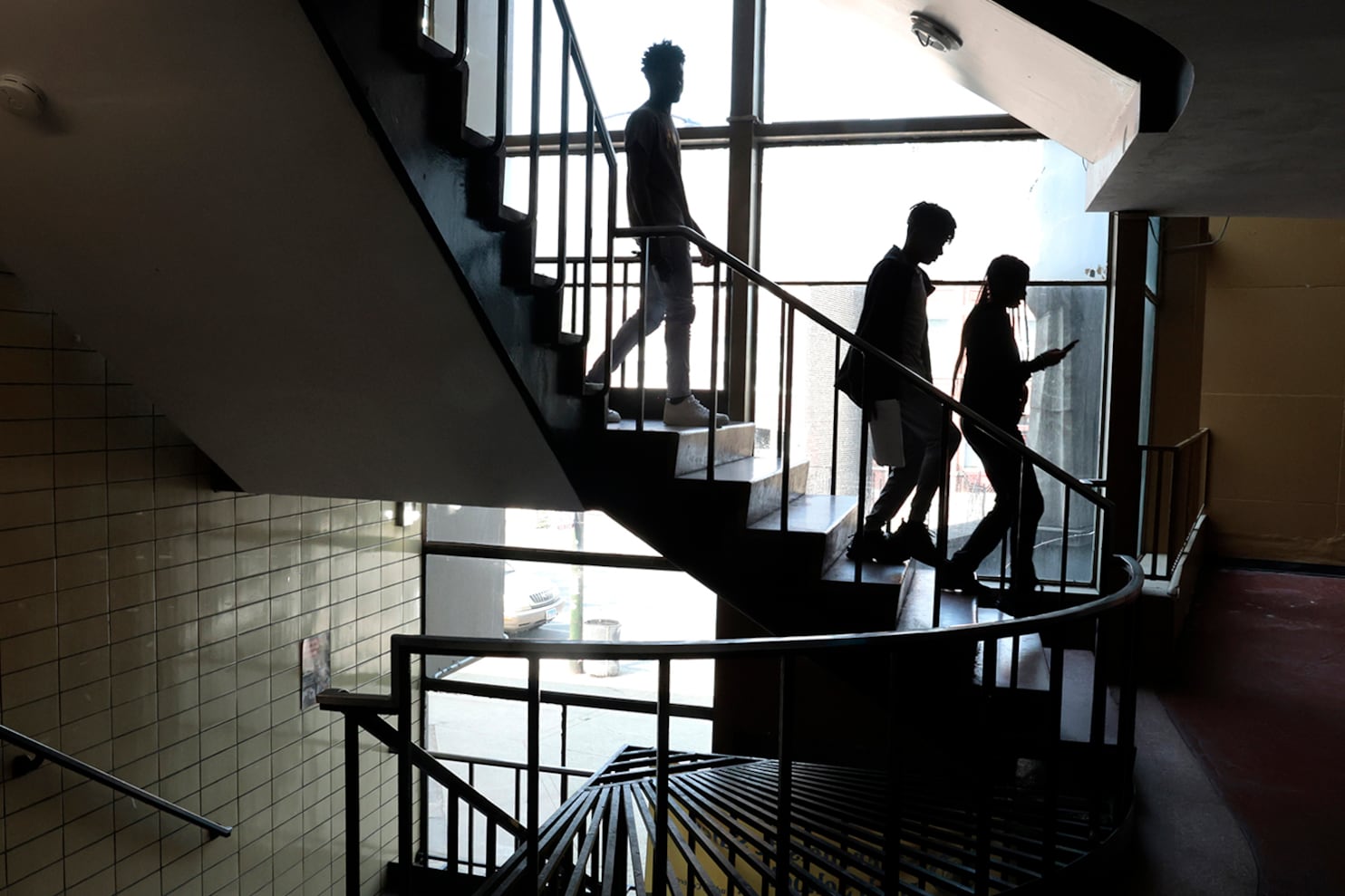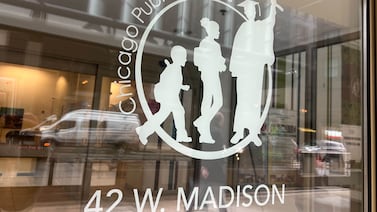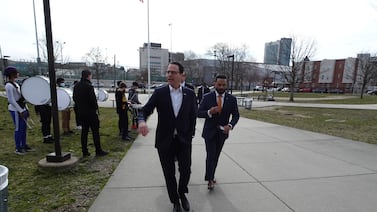Sign up for Chalkbeat Chicago’s free daily newsletter to keep up with the latest education news.
Chicago Public Schools pitched a new school safety plan Wednesday that would get rid of campus police, call for more training for educators on alternative discipline practices, and require locking classroom doors.
The proposed plan, which is on the agenda for next week’s board meeting, comes three months after the Chicago Board of Education passed a resolution to remove school resource officers, or SROs, by the start of next school year. At the time, the board directed CPS CEO Pedro Martinez to create a new safety plan by June 27 that focuses on restorative practices.
Thirty-nine high schools still have on-campus police officers staffed by the Chicago Police Department. At 57 other schools, Local School Councils, or LSCs, voted to remove SROs.
The board’s plan to remove police could be reversed. State lawmakers have filed a bill that would allow LSCs to contract with the Chicago Police Department to staff SROs. That bill is still being negotiated, according to a spokesperson for Rep. Mary Gill, the bill’s sponsor who represents Chicago’s Beverly neighborhood.
The district’s new proposed safety plan, however, extends beyond campus police. The plan builds on existing district efforts to teach kids about social-emotional skills and restorative justice practices, which are alternatives to discipline meant to resolve conflict and understand the root of student behavior, according to the proposal. All schools would be required to have a safety plan based on these new guidelines by 2028.
The plan covers “physical safety, emotional safety, and relational trust, which drives the development of a holistically safe environment,” said Jadine Chou, CPS’s chief of safety and security, during a board meeting Wednesday to review the board’s agenda for next week.
Chou said the plan was developed with community organizations and considered feedback from a survey about school safety that drew 9,000 responses. The board will vote next week to open a 30-day public comment period on the proposed plan and would vote on the plan after that.
Among the proposed plan’s highlights:
- All schools would be required to have at least one security guard. Schools would get more guards based on a formula that considers multiple factors, such as the size of the school building, the number of students, and neighborhood crime.
- All schools would be required to have an emergency management plan that’s updated annually.
- All schools would have to teach social-emotional learning and must implement restorative practices.
- Schools would include training on “climate, trauma-responsive, and social and emotional learning” in professional development plans
- All schools would be required to have behavioral health teams, which are charged with supporting students who are in crisis, those who have experienced trauma, or are in need of mental health assistance. Most CPS schools – 460 – already have such teams, according to a district spokesperson.
- All interior and exterior doors must be locked at all times, except for bathroom doors. Staff would have keys to doors.
This fall, all schools would receive data from the district to “conduct a baseline assessment of their safety, culture and climate” and would be required to develop safety plans based on that assessment.
After brief remarks from Chou on Wednesday, board members applauded the proposal. Board member Rudy Lozano said it signals a shift from discipline to a “healing-centered equity frame for students.”
Board’s approach to school safety draws mixed response
The board’s recent actions on school safety drew praise from advocates who had long pushed CPS to invest money in more social workers and other resources, and highlighted how Black students were more likely to be arrested. The decision drew opposition from some Local School Councils and elected officials who felt that LSCs should decide whether to keep police on campus.
Most research shows that schools with police tend to have higher arrest and suspension rates but doesn’t clarify whether police are the cause or if officers are more likely staffed at schools with more challenges, according to a Chalkbeat review of research in 2020. Nationally, students have generally positive views of SROs but those views tend to worsen among Black students, who are more likely to get arrested. Another study last fall found that Chicago schools implementing restorative justice practices saw fewer student arrests. Students also reported feeling safer at school.
David Stovall, a UIC professor of Black studies and criminology, law, and justice, said the district’s proposed safety plan reflects what many community members have asked for.
However, Stovall said, the plan will work only if officials can ensure all schools are meeting requirements, such as creating behavioral health teams with mental health professionals.
“It can’t be just one office operating out of central [office], right? You have to have teams of folks in order to do that work we’re talking about,” Stovall said.
The plan seems to require more resources at a time that CPS is projecting a $391 million budget deficit next fiscal year, which begins July 1, he said.
Mo Canady, executive director of the National Association of School Resource Officers, which works with the Chicago Police Department to train Chicago’s SROs, said he was “deeply disappointed” in the board’s decision. Canady said officers are trained to “build positive relationships” with students, parents, and staff.
“We recognize that in some communities, there’s strained relationships with law enforcement,” Canady said. “If we’re ever going to get that right, we’ve got to get it right with the next generation [and] the next generation just happens to be adolescents that are going to become our next adults in society.”
The movement to remove SROs came into focus in 2019, when the U.S. Department of Justice placed the Chicago Police Department under a federal consent decree and raised questions about the role of campus police. Then in 2020, the district asked LSCs to vote on whether they wanted to keep their SROs after protests over Minneapolis police officer Derek Chauvin’s murder of Geroge Floyd.
On the campaign trail, Mayor Brandon Johnson said he supported getting rid of campus police, but later said he supports letting LSCs make that decision for their schools. Johnson flipped again earlier this year when he supported the board’s decision to remove officers.
Correction: May 15, 2024: This story previously said the incorrect number of days this proposal will go out for public comment.
Samantha Smylie contributed.
Reema Amin is a reporter covering Chicago Public Schools. Contact Reema at ramin@chalkbeat.org.







